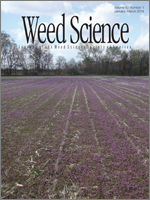Given the importance of emergence level and timing to the competitiveness and success of annual crabgrass species in turfgrass, particularly in the context of increasing synthetic pesticide bans and the common cultural practice of fertilization, a study was conducted in a northern region of North America (Ontario, Canada) to determine the effect of fertilizer application on large and smooth crabgrass emergence in residential lawns. In petri dish experiments, we reconfirmed that KNO3 has a significant positive effect on large and smooth crabgrass seed germination but we showed that there is only an effect on fresh seed and no effect on aged seed, suggesting that the treatment affects dormancy level and not germination per se. In two other experiments using turf cores and commercial lawn fertilizer in growth room conditions and in field trials at three sites, we confirmed this result showing that neither fall nor spring fertilizer application had any effect on the emergence level of either smooth or large crabgrass. These results have practical relevance to homeowners and turf managers in this region because they are dealing with crabgrass emerging in the spring from seed shed the previous fall. The results also show that fertilizer can be used to aid turf quality and competitiveness without impacting true infestation level (density) of crabgrass in the spring.
Nomenclature: Large crabgrass, Digitaria sanguinalis (L.) Scop. DIGSA; smooth crabgrass, Digitaria ischaemum (Schreb.) Schreb. ex Muhl. DIGIS.





